7/19PDC第一屆同學苗栗逍遙遊
7/19晴時多雲,是個踏青的好天氣
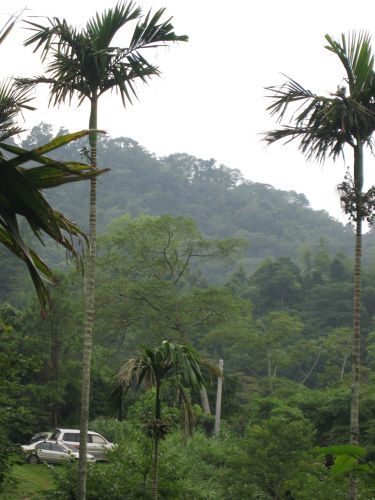
在二個月前就相約的苗栗之旅終於在今天起程,有幾位不常露臉的PDC同學分別從台中、台北到苗栗相聚,許久不見的大家見到彼此真情流露地互相擁抱,這應該是今天最精彩的鏡頭了,今天簡直就是個小型PDC同學會,自己也好久沒有吆喝朋友們一同共乘出遊了,看著前後幾輛車互相依畏著,行同一速度前進,真是令人期待的一趟旅程。
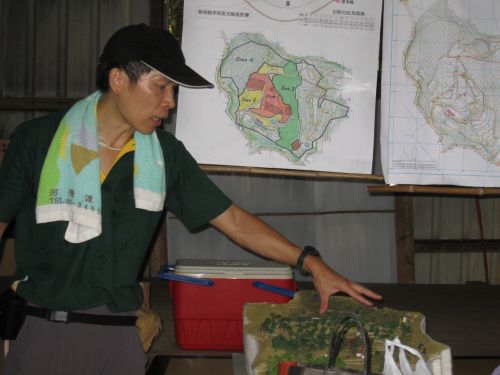
序樺大哥在帶我們參觀前先解說這塊地購買的過程及地形、林相、氣候、及規劃區域分配圖
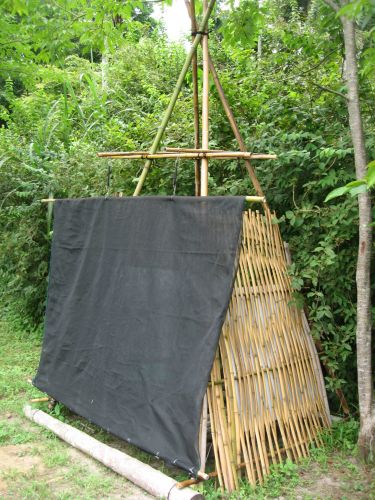
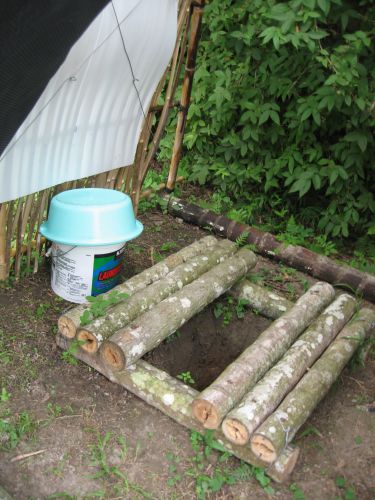
序樺大哥的堆肥廁所,瞧這是檳榔樹做的喔~ 序樺的作法是,直接在地上挖洞,滿了後,就種一棵樹,再換地方。這對序樺的地來說是適合的,但並不是每個地方都適合這樣做喔,還是得因地制宜。
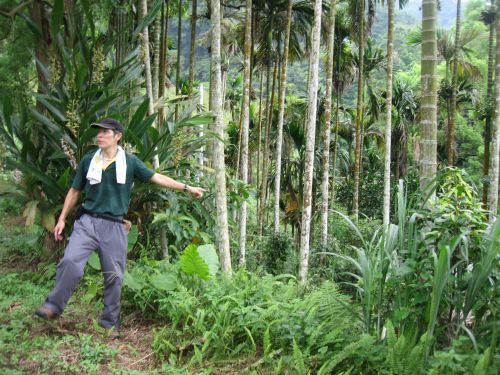
這是未來小樹屋的預定地喔~序樺大哥歡迎大家來協力造屋,沒錯這是要給它蓋在檳榔樹上!
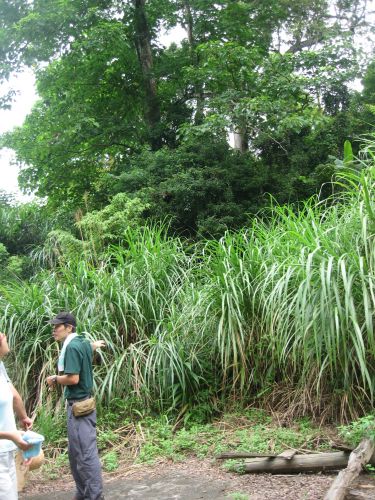
在序樺大哥後方是塊建地,未也打算將房子蓋在這,不過,上方有顆油桐花,怕油桐花的根系淺,容易傾斜, 會影響下方的房子。
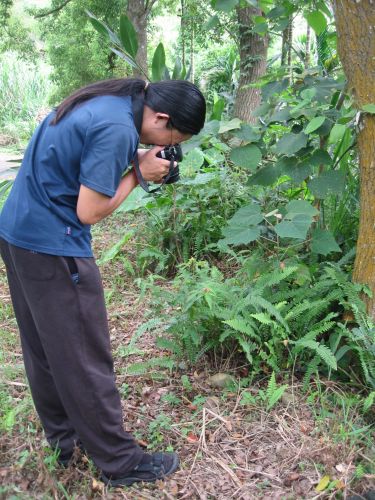
一善今天是扮演神密觀察者的角色,一路上拍拍拍~~
仔細觀察植物間的依存關係
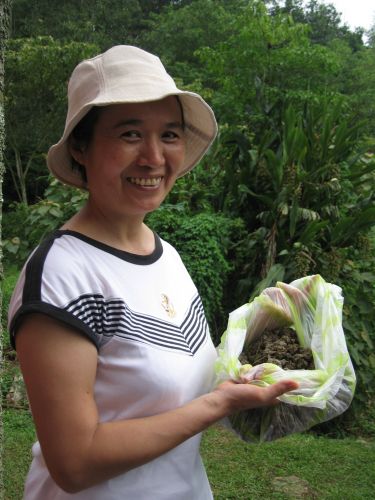
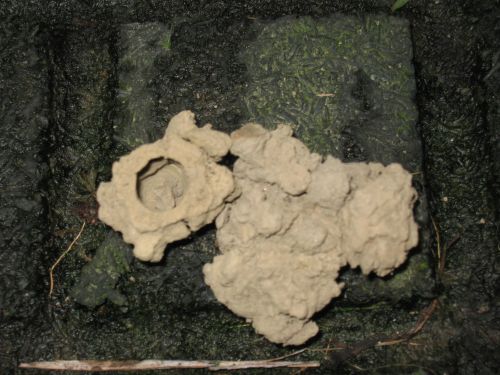
不要笑我們台北聳
這些蚯蚓大便可是寶貝呢~
打包帶走是一定的啦~~~~玉華應該是打算用來豐富陽台的土壤。
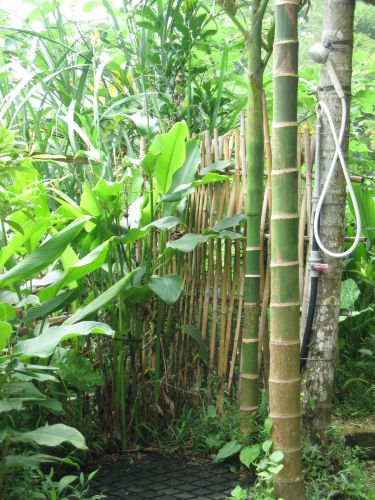
純天然的淋浴間,讓全身濕黏的我一直望著它流口水
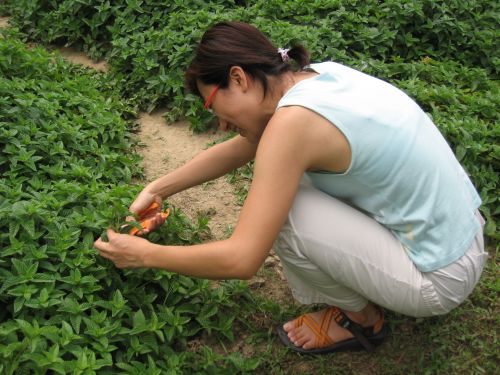
仙草要乖乖跟我回家哦~我保證讓你們長的又高又壯
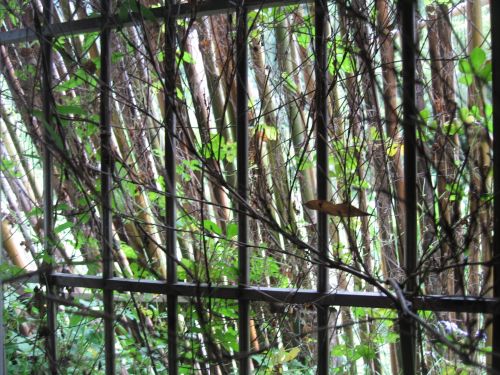
序樺的小工寮,用簡單的一排竹子就當起遮陽棚,很有效!
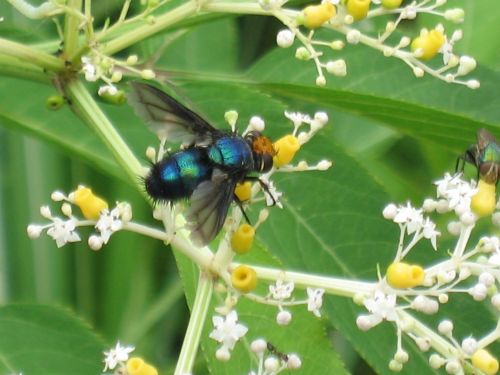
冇骨消的蜜杯提供餵養著昆蟲
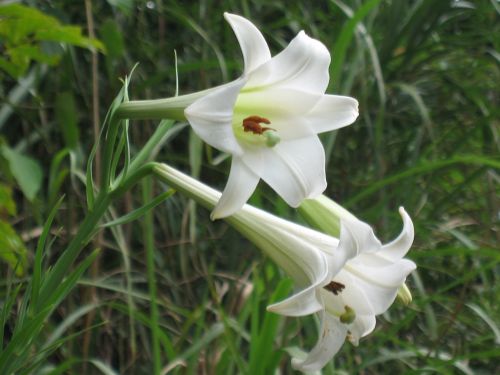
植物、昆蟲豐富,不愧是泰迪口中的寶山
從序樺那裡來開後,大家一起來到璟蓉與光明夫婦的地。常常看到他兩的手札分享,如今終於得以見到楓樹里這塊地的真面目了!
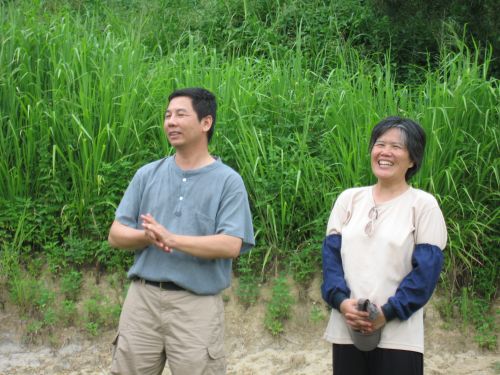
希望能在退休後寄情於山野間是倆夫婦最大的願望,但光明大哥平日上班,只能利用周未務農
璟容與光明大哥的地上有不少貝殼遺跡,可以證明這塊地過去應該是河床
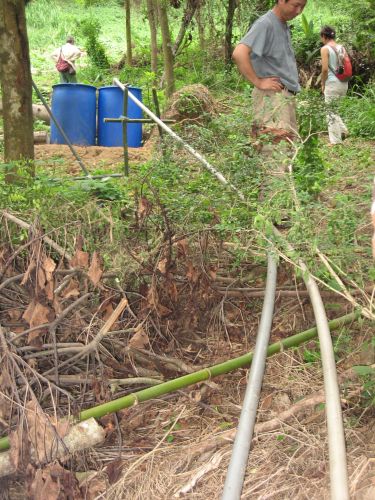
目前山坡區仍需要從平地的水塔送上去,但未來也許可以規劃在高處集水,利用重力送到低處,會較符合能源效益。
外來種小花蔓澤蘭的肆虐很嚴重,大家順手幫忙拔除了一大堆。我想,當我們更了解這外來種的生態,應當可以將他在剷除後曬乾,變成一種肥料或是覆蓋物。


好野趣!!
光看照片就覺得好有趣 也謝謝用心的翻譯,88災後看此內文,令人格外思量... 請問是在苗栗哪裡呢? 還會有這樣的課程嗎?想去報名!! 還有請問將在10月底辦第二屆PDC是否位受88水災影響,仍如期舉辦? 或有相關資訊(8/11.14的說明會)可以參考呢? 一次多問,請多包含喔!! 謝謝~
謝謝
雖然沒跟上大家的腳步
但事後的文裡行間
彷彿也在現場聽聞到所有的聲音與氣息
以及同學的笑靨身影
Peter的細微觀察很棒 很受用
謝謝
心得
看完此篇,受益良多!
Peter提供給序樺的建議(中英文對照版)
序樺自己將Peter提供的回饋給翻成中文了
真是太好了!
他說歡迎寄給大家閱讀。
另因為他對於璟容的地的相關背景比較不瞭解
所以不好意思翻。
那部分就在請大家稍待
玉子正在努力練習中。
慧儀
--------------------------------
Hello Hsuhua and Jingrong,
Thanks for inviting us to your lands. It was a great chance to get away from our busy schedules, reunite with our classmates, and have a chance to practice design skills on different sites. As a landowner, I realize the difficulty of developing a vision and implementing plans for a site. I find it helpful to have input from other sources, so here I offer some input and questions about your land that you can consider (and most likely you have already considered!). This is a design practice for myself, but hope it can be of help to you too. I’m aware that I may not see the whole environmental and social picture behind your site, so I only offer these suggestions from the view of an outsider, and am sure you are the best designer of your own land! I list suggestions in five areas: energy, water, soil, plants, and people.
感謝你邀請我們到你的農地!這是一個很棒的機會能擺脫繁忙的時程表,讓同學們聚在一起,並有機會在不同的場地練習設計技巧。作為農地擁有者,我能了解規劃一塊土地的遠景和發展出執行計劃的困難。我認為能有其他支援的投入是有幫助的,所以我在這裡提出了一些意見,你可以參考看看(或許你已經考慮過了!)。這是一個我自己的設計方式,但希望它也可以對你有所幫助。我知道我並沒有看完整個農地的環境和資料,所以我只能以一個局外人的角度提供一些建議,我相信你會是自己土地的最好設計者!我針對五個領域提出我的建議:能源、水、土壤、植物和人。
I. Suggestions for Hsu-hwa:
1. Energy:
甲、Each trip to your site requires quite a lot of gasoline fuel. To respect this ancient energy source, each trip up the mountain should bring plants, plant cuttings, organic matter, or other materials. Guests can be asked to bring cuttings/seeds from their area. This strategy can provide incredible diversity of useful plants within a short period of time. Guests will be happy to provide.
每次到你的農地需要消耗相當多的汽油燃料。為了珍惜這存在已久的能源,每次上山應攜帶些植物、植物扦插、有機質、或其他材料。可要求客人把植物扦插及種子從他們的地方帶過來,這種作法可以在短時間內發展出令人驚訝的有用植物多樣性,客人應該會很樂意提供。
乙、How will you live up here when there is no more convenient gasoline for transport, food preservation, cooking, etc.? Photovoltaics for electricity is possible. Wind or hydropower doesn’t look feasible. Passive solar, and biomass for cooking/heating water. Rocket stoves or other efficient local-energy technology for cooking.
當能源取得不易時,交通運輸、食物保鮮、烹飪等都將成問題,你要如何在這裡生活? 可以考慮太陽能、風力或水力發電的可行性,也可以用被動式太陽能、生質能源來炊事及加熱水,或是用火箭爐或其他有效的當地能源科技來煮飯。
2. Water
甲、Is your water source 100% dependable all year round? If not, how can it be so?
你的水源可以百分之百全年供應嗎? 如果沒有,該怎麼辦?
乙、How can you create a dam without clay? Are there any clay resources nearby that could be cheaply transported to your site? Perhaps waterproof fabric can help. You can also look into GLEYING technology.
如果沒有粘土,要如何建造一個水壩? 附近有沒有粘土資源可以廉價運到你的農地? 或許防水布可以提供幫助,也可以考慮運用GLEYING科技(一種封水壩的技術)。
丙、Your proposed dam location looks okay BUT before creating a dam, how can you let the excess water flow spread out more evenly across your land – consider redirecting flowage from the existing drainage gully on the north side of your land into small swales (on contour) throughout the northern half of your land. Small swales can also branch from all sloped roadways. This will reduce the amount of water flow and erosion below. Even spread of excess water may be more useful than a dam and may even cancel the need for a dam.
你提議的水壩位置沒問題,但在建立水壩之前,你要如何將多餘的水流更均勻地分佈在你的土地? 可以考慮利用等高線建立許多條小截水溝(swales),將農地北側的排水溝水流引導到整個北半部的土地。也可以從所有的坡道分支出小截水溝,這樣可以減少水流沖刷造成的侵蝕。分散開來的多餘水流可能會比水壩更有用,甚至可以不需要建造水壩。
丁、Build up more organic matter to retain water. Create swales for deposition of organic matter.
建立更多的有機物質來保留水源。做截水溝可以造成有機質的沉積。
戊、Catch water from the roofs of existing structures and utilize this water locally for food production and washing, etc.
從既有建築的屋頂回收雨水,利用這種水源作為該地的灌溉和清洗用途。
3. Soil
甲、Compared to 200 years ago, your soils seriously lack organic matter. CONTINUALLY ADD ORGANIC MATTER, especially to places where you focus growing efforts. Worm activity and black soil indicates where organic matter is greatest on your land – perhaps begin growing food here.
相較於200多年前,這裡的土壤嚴重缺乏有機質;要持續地增加土壤中的有機質,特別是針對打算耕作地方。蚯蚓活躍的地方及黑色的土壤,表示這一區的土地富含有機質,或許你可以在這些地方開始種植糧食作物。
乙、Map out a fruit tree and vegetable planting scheme – concentrate efforts in zones I and II. Allow the other areas to regenerate on their own.
畫一張果樹和蔬菜種植計劃草圖,集中精力在第一區和第二區,讓其他區域自我恢復。
丙、Introduce animals in zones II and III. Chickens and/or turkeys will help considerably in the peach orchard. If there is no danger of dogs, free-range poultry seems possible throughout the system, even when you don’t live here. Goats may be an option, but require more maintenance.
將動物引進第二區和第三區;雞和/或火雞對於桃樹林有很大助益。如果沒有狗的威脅,即使你不住在這裡,家禽應該可以自由放養在整個系統中。山羊可以是另一種選擇,但是需要較多的照護。
丁、Check the northern gulley during rainfall. Any excess or fast flow could be slowed down with lateral branches and/or offshoot swales to other areas. This gulley could be completely transformed into a swale system within a few years so that little/no runoff goes off the land. Swales not only collect water, but soil components, too.
在降雨期間檢查農地北側的排水溝水流量。任何過量或快速流動的排水,可藉由橫向分支的截水溝將水流減緩,並且分流到其他地區。這條排水溝可以在幾年之內完全轉變成一個截水溝系統,使農地不致有徑流產生。截水溝不僅收集水,也累積土壤成分。
戊、Check the overflow at the roadway entrance – why is there erosion at the road? How can you keep this excess water on your land? How can you prevent further erosion of the roadway? Government funding for rural roads may be very limited in the future. Think of the entire roadway leading up to your land. Work with other landowners to protect the road.
檢查農地入口處的道路,為何會有溢流水侵蝕路基? 如何將這溢流水保留在你的土地? 如何防止進一步的路基侵蝕?應該聯合其他地主一起來維護整條的上山道路,指望縣政府來修復農村道路是非常不可靠的。
4. Plants
甲、Grow more food! You have excellent conditions (good drainage and natural windbreaks) to create vibrant and diverse food gardens! You could live up there most of the time. Your soil and microclimate present good conditions for a wide range of food plants.
種植更多的糧食作物!這裡有非常好的條件(良好的排水系統和自然防風林),可以建立充滿活力和多樣化的食物花園!你可以長時間生活在這裡,這裡的的土壤和微氣候條件,很適合栽種各類的糧食作物。
乙、Introduce greater plant diversity with focus on perennials, natives, and food plants.
引進更多樣的植物,尤其是多年生、本地的糧食作物。
丙、Grow low maintenance annual+perennial crops under peaches in conjunction with chickens/turkeys/etc.
在桃樹下種植不太需要照顧的一年生及多年生作物,同時放養雞、火雞…。
丁、Start planting timber forests in Zone IV for the next generation (of humans)
為了下一代著想,開始在第四區植樹造林作為未來的建材。
戊、Consider planting hardy perennials (other bamboo species?) as a barrier to prevent Gueizhu from extending further into the land. You can experiment with several species.
考慮種植耐寒多年生植物(其他竹種?)作為屏障,以防止桂竹林進一步擴大。你可以嘗試種植一些其它物種。
己、Respect local genetic adaptation – for example, don’t give away all of your locally adapted ginger crop – this is a great resource to expand on.
尊重原生物種,例如,不要放棄原有的當地生薑--這是一個很好的資源,應予擴大。
5. People
甲、How will you attract a community of people here? Friends? Family? How can you increase the incentive for others to live here? Economic livelihood?
要如何吸引人來這裡成為一個社區?朋友?家庭?如何提高誘因吸引其他人來這裡住?如何過經濟自主的生活?
乙、Create a list of projects for Permaculture classmates to help with – we are willing and able to help!
列出一份計畫清單,讓Permaculture的同學能參與協助--我們都樂於提供幫助!
丙、How will you live up here over the long-term?
要如何在這裡長期生活?
丁、What are the ancient human resources in this area and what traditional wisdom is available to draw on (concerning climate, plants, water, skills, etc.)? Who lived here 500 years ago? How?
早期這一帶有哪些資源? 有什麼傳統智慧可供借鑒(有關氣候、植物、水、技能等)? 500年前誰住在這裡? 如何生活?